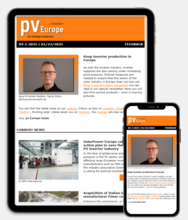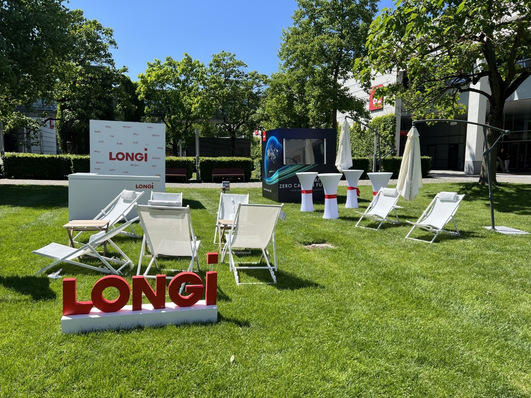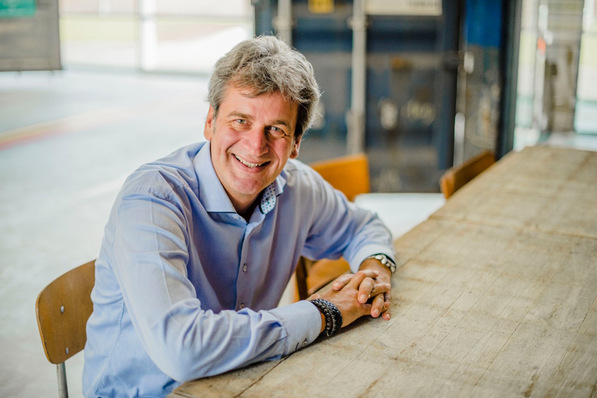Euronergy focusses on lightweight modules. What applications do you intend to use them for?
Martin Green: The light weight of the modules really opens up a range of new applications. Probably the most important one is for installation on buildings that are not designed to take the conventional modules. The light weight allows you to instal them on warehouses and other buildings that weren't really designed to have any extra loading on the roof. The other application is building facades, because it is possible just to attach the module to the facade material without any special substructure required. This makes it very well suited for facade applications. The third application we focus on is the vehicle integration like caravans, buses, lorries and trains. Their light weight and slim design make them perfect for this purpose, because this doesn't create any obvious disturbances to the performance of the vehicle.
Keep up to date on the solar energy transition. Subscribe to our free newsletter!
How are the modules are installed?
They can be installed very simply. On a flat roof, you can just glue them to the roof. There's some preparation work required, but really just as simple as that. If the roof is corrugated or is not even, there's a specially developed subconstruction that can be laid down and then the modules are mounted to that. But they are also quite flexible. If there is just a slight curvature, the modules can actually follow this curvature. They've got a 30 centimetre bending radius, so that if the curvature is not too severe, the modules can follow that quite comfortably.
Is the modules also available with pitched roofs? You can't glue them on pitched roofs, so do you use a normal subconstruction and make the modules available with the frame?
Yes. There is a special composite frame that is being developed, and that will be available with the modules. Again, it's not the traditional approach, but because of the lightweight of the module, you are able to explore new territory in terms of the framing.
ESG: The EU wants to be a pioneer
Is the composite frame not as heavy as an aluminium frame?
Yes, it is lighter and it is not as expensive.
The weight plays a very important role with this technology, begging the question: How heavy are the modules?
They are about three to three and a half kilograms per square metre. This is three to four times lighter than a conventional module.
Smarter E AWARD 2025: Energy Transition pioneers shortlisted
Which materials have substituted for glass?
It has been specially developed for these modules, so I can't go into the details. But it is a polymeric layer that has been developed specially for these materials and has performed very well in the testing that has been done.
You have already mentioned facade applications, for which there are different colours available.
Yes. The basic version is black. Well, that's the best for generating energy. Then there are red, blue, and yellow colours available. So customers like architects or building owners have quite a choice in the colours available.
Are there plans for further development?
Yes, it's certainly feasible, if there is a demand for other colours.
Expert analysis: How perovskite can overcome durability concerns
Which colour technology are you using?
We have a partner that is a polymeric expert, and they develop the colouring technique for Euronergy. The details of that are confidential to that company. But we are able to provide that range through the technology that they have provided to the company.
What are the impacts of the colouring on the output of the modules?
Black is really good. With the colouring you can lose between 10 to 30 percent because if you're reflecting light to get the colour, that means that light is not getting into the modules, so you'll lose something, much as with other technologies.
Interview by Sven Ullrich.
Read about the special qualities of the modules from Euronergy in the second part of the interview series with Martin Green.








